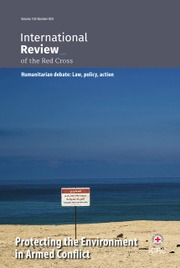The majority of rules of international humanitarian law (IHL) apply exclusively within the context of armed conflict, whether international or non-international. Yet some rules of IHL are applicable in peacetime, while others persist beyond the cessation of hostilities.
In any course on IHL, the constitutive criteria for “armed conflict” garner a lot of attention – as reflected by the considerable amount of literature on the subject. In stark contrast, public international law has yet to establish a universally accepted definition or set of criteria for delineating the concept of “peace”.
In practice, the pathway from war to peace will be different in each context. Often it is far from a linear route, instead reflecting an iterative process fed by many complex factors at play. In some cases, and sometimes after years or even several decades, the war ultimately concludes. Whether through one side's declaration of victory or a negotiated resolution, the cessation of hostilities in such cases marks the emergence of a kind of peace, however tentative or precarious it may be. In other cases, armed conflicts may end up being referred to with terms such as “frozen” or “low-intensity”, with no clear end.
In light of these dynamics, this issue of the Review examines the intricate relationship between IHL and peace, touching also on the role of humanitarian organizations in this interplay. The diverse contributions featured in this issue reveal that this relationship is far more nuanced and multi-dimensional than it might initially appear.
The issue concludes with an interview about the October 2024 International Conference of the Red Cross and Red Crescent, and a selection of key documents adopted by the Conference and the 2024 Council of Delegates. Among these documents is a resolution adopted by the Council of Delegates, entitled “Reaffirming the Role of the Movement as a Factor for Peace”. In his article for this issue, Daniel Palmieri examines the history of the relationship between IHL, the International Committee of the Red Cross (ICRC) and the International Red Cross and Red Crescent Movement, on the one hand, and peace, on the other; the adoption of this resolution demonstrates that this history continues to be written by the present generation. Looking ahead, “IHL's Contribution to Peace” figures as one of the workstreams of the Global Initiative on IHL, launched in September 2024 by the ICRC together with six States.Footnote 1
The Review hopes that this issue can serve to contribute to conceptually clarifying this important debate for now and the future. The stakes could not be higher – indeed, “[r]espect for IHL can be a first step towards building trust and facilitating the path to peace when the parties decide to pursue it”.Footnote 2


